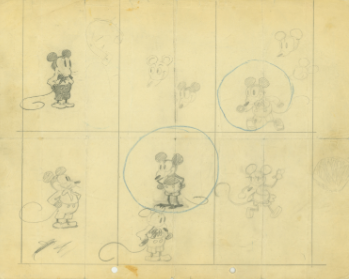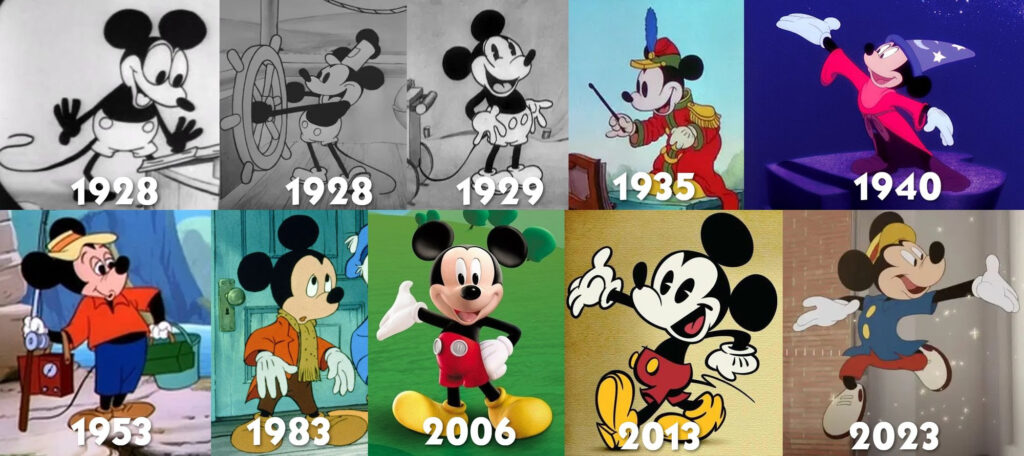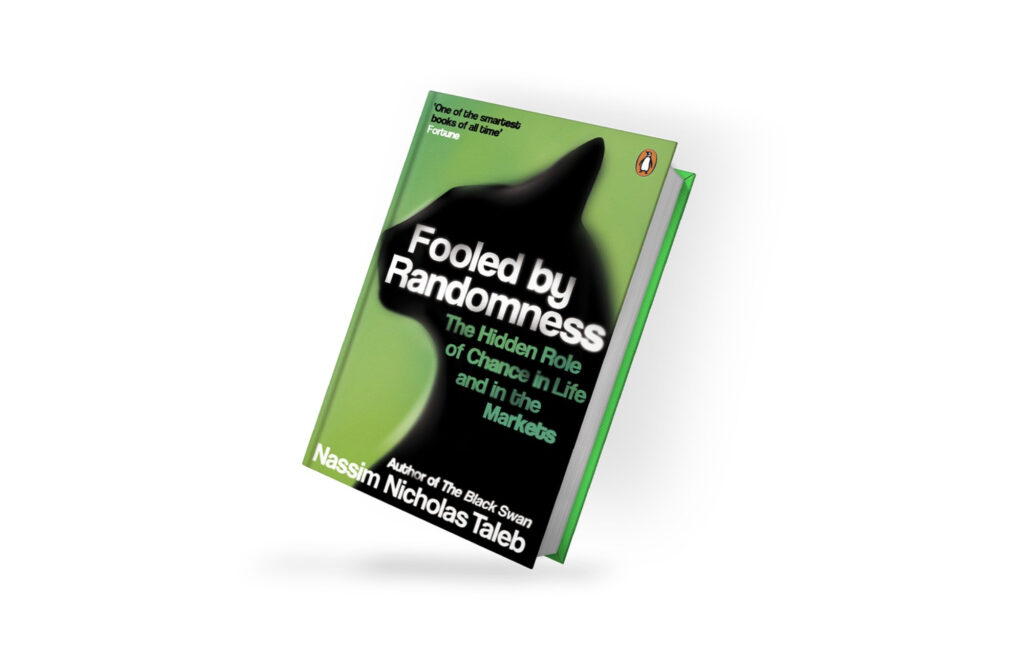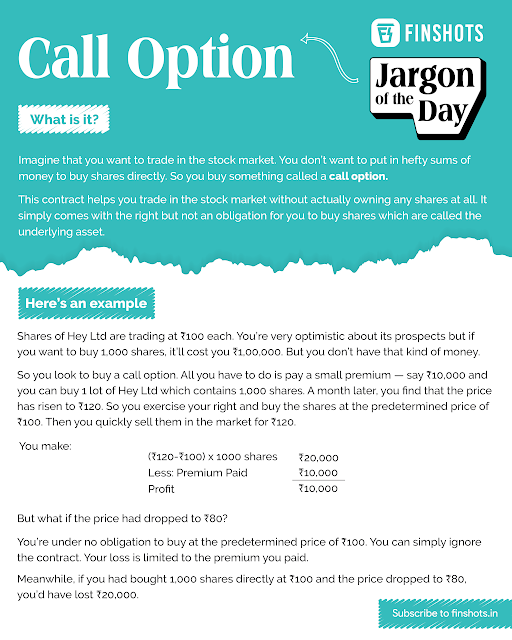
In this week’s newsletter, we talk about Disney’s copyright over Mickey Mouse, Apple losing a patent war, money tips and a lot more.
If you’d like to receive our 3-min daily newsletter that breaks down the world of business & finance in plain English – click here. Or, download the Finshots app here.
Will Disney lose Mickey Mouse?
In 1927, Walt Disney and the animator Ub Iwerks created a cartoon character for Universal Pictures, the film production giant. They called it Oswald the Lucky Rabbit. And they created 26 successful cartoons featuring Oswald.
But in 1928, Disney had the shock of his life. When he tried to renew the contract he found that he didn’t own the rights to Oswald anymore. A man named Charles Mintz who’d negotiated Disney’s deal with Universal had seen the rabbit’s success and used his own studio to create Oswald cartoons for Universal.
Walt Disney lost his first cartoon figure.
But he wasn’t giving up. He needed another cartoon figure. So he probably decided to tweak the rabbit’s sketch itself. He changed the nose, ears, and tail and the rabbit quickly took the shape of a mouse — and just like that, the beloved Mickey Mouse was born!

The earliest known drawings of Mickey Mouse | Source: The Walt Disney Family Museum
Now Disney didn’t put a foot wrong this time. He ensured that he owned the copyrights to his new creation. Which meant that no one else could use it without his permission.
But the thing is, copyrights aren’t forever. They come with an expiration date. And in the case of Mickey Mouse, the copyright was expected to last 56 years. Yup, in 1984, the copyright should’ve expired as per the law. But the Walt Disney Group wasn’t happy. So they lobbied the US government and influenced them to extend this term. And then again, when 2003 drew closer, they pushed for another 20-year extension and the law changed again. The new law even got the nickname — the Mickey Mouse Protection Act due to Disney’s influence.
But anyway, the copyright protection is finally ending on 1st January 2024 — 95 years after Mickey Mouse first made an appearance in a cartoon. And that means, anyone can soon freely use Mickey Mouse’s character in their content without Disney’s permission. And Disney can’t do much about it.
Wait… What? Won’t that lead to billions of dollars in losses for Disney?
Not quite. Because there’s a catch.
You see, Walt Disney’s OG version of Mickey Mouse featured in a cartoon called Steamboat Willie. And that Mickey didn’t look anything like the popular version of the plump one in red shorts and white gloves we know today. He was a rather lean black-and-white character with a longer nose, thin tail, and smaller ears. And it’s only this OG Steamboat Willie version of Mickey Mouse that’s losing its copyright. So as Jennifer Jenkins of Duke University says:
…anyone can share, adapt, or remix that material. You can start your creative engines too—full steam ahead! You could…create “Steamboat Willie: the Climate Change Edition,” in which Mickey’s boat is grounded in a dry riverbed. You could create a feminist remake with Minnie Mouse as the central figure.
But, here’s where Disney still has an upper hand. See, it’s only the Steamboat Willie version that can be remade for now. And that’s because Walt Disney has created multiple versions of Mickey Mouse since 1928. Each of these newer versions is protected by its own copyright. So they’ll only escape from Disney’s copyright grip as and when they individually turn 95 years old. No one can touch these versions yet without Disney’s explicit permission.

Source: Duke Law
And that means the billions of dollars that Mickey Mouse’s brand earns every year isn’t really under threat.
Also, don’t forget that Disney still owns the trademark to the Mickey Mouse brand. And unlike copyrights, trademarks live on forever. Or at least until the brand is in existence. Trademarks ensure that you don’t use imagery and deceive someone into thinking that it’s promoted by that brand or company. So if you do decide to start a clothing line and stamp the 1928 version of Mickey Mouse on it, it could be a legal grey area. Walt Disney’s financial and legal team could still come after you.
So yeah, it doesn’t look like Disney’s losing Mickey Mouse in any way.
There’s only one thing that might turn into a thorn in Disney’s foot. And that’s to do with managing the brand reputation.
See, when the cute Winnie the Pooh bear also lost its copyright, someone decided to turn its friendly image on its head. They made a horror film in 2022 called Winnie-the-Pooh: Blood and Honey. Never mind that it didn’t do well. But you’d imagine that children might find it hard to dissociate this image from the original one.
And if the 1928 version of Mickey Mouse also gets portrayed in a negative light, who knows how it could affect future sales? That’s something we’ll have to wait and see.
Fun Fact: In 2006, The Walt Disney Company struck an agreement with NBC Universal to re-acquire the rights to Oswald the Lucky Rabbit. Oswald got a voice for the first time since his creation and starred in a game alongside Mickey Mouse.
Is the Apple Watch just a sly copycat?

Apple just lost a patent war! And now, the tech giant can’t sell its money-spinning Apple Watch this Christmas!
What?!
Yup, we know that’s crazy. But let’s tell you a little bit about what’s going on here.
The year is 2013. Masimo, a relatively small medical corporation, had just solved a big problem in the medtech industry ― inaccurate blood oxygen measurements. You see, before this, most technologies that measured oxygen levels in the blood needed patients to remain absolutely still. Otherwise, it would result in a false reading. But you know you can’t expect patients to always stay still. So this was a big problem.
Masimo had a brainwave. It came up with a technology where light could be transmitted through body tissues around the body part where these devices were worn. Blood that has enough oxygen or lacks it, absorbs light differently. So sensors would pick up this behaviour and return a reading in the form of a number. Accuracy levels jumped. And it was a game-changer.
Now Apple was watching these developments. It was in the early stages of building its wearables business — stuff like watches. And it knocked on Masimo’s doors. It wanted to partner with Masimo to integrate its new technology into these new products. Masimo was over the moon! An association with Apple could fuel its business like a rocket ship. And they rushed to sit across the table with Apple for some confidential meetings.
But soon, the whole episode turned into a nightmare for Masimo.
Masimo realised that Apple didn’t care much for it. Apple just wanted the tech. And soon enough, the tech giant started poaching its major employees including the Chief Medical Officer. Apple dangled lucrative compensation packages in front of them.
Next thing you know, many folks with sensitive information about the tech jumped ship. Now, Masimo didn’t think that anything could go wrong. After all, its former employees had agreed to respect the confidentiality clause.
So at first, it behaved with restraint. It simply wrote to Apple asking it to keep away from pulling out such trade secrets from its former employees.
But the damage was already done. These folks had already begun filing patents on behalf of Apple behind Masimo’s back. If you’re unfamiliar with patents, it’s an official claim of sorts that asserts a company’s right over a new invention. So it gives the company a legal right to stop others from making or using its creation for a certain time. And apparently, these Apple patents were similar to what Masimo had applied for as early as 2002.
And then Apple released devices loaded with light sensor blood oxygen reader technology.
And that’s when Masimo decided to go on the offensive. It filed a lawsuit against Apple in 2020. It alleged that Apple stole its trade secrets. Secrets that helped Apple use technology that currently ticks on the new Apple Watches.
Now the jury couldn’t decide who was in the wrong here. And the case ended up in a deadlock.
But Masimo didn’t lose hope. It filed another complaint with the US Trade Commission in 2021. And finally, these folks ruled in favour of the medical corporation. They said that Apple violated Masimo’s patents. And that it couldn’t sell its famous Watches anymore.
And let’s just say this could be a massive blow to Apple. Its wearables, home and accessories business which includes its AirPods and Watches generates over $40 billion a year ― and 40% of the segment’s revenues till September this year came from Watches alone.
So yeah, it looks like Masimo’s finally getting its revenge!
But wait…Apple is such a massive company. Do you really think it’ll resort to such antics to get ahead?
Well, Apple’s actually got quite a bad reputation for being a bully. In fact, when Apple knocks on the door of a smaller player, people even call it the “Kiss of Death”. Or in the words of Masimo’s CEO — “First, you get all excited. Then you realize that the long-term plan is to do it themselves and take it all.”
Here’s another example.
In 2016, a company called AliveCor made an accessory that could run an electrocardiogram (ECG) when paired with the Apple Watch. But before AliveCor started selling the product, Apple met with the company to see what the product could do.
A couple of years later, Apple introduced the ECG measuring tech directly into its Watch. It made AliveCor redundant. And it didn’t stop there. It even blocked the integration with AliveCor.
Needless to say, AliveCor complained. It claimed patent infringement. And it won. The Apple Watch with ECG monitoring was banned.
But wait…Apple didn’t cede ground either. It decided to go to the patent board and try and strike down AliveCor’s patent. It worked. The board decided to allow sales to continue. And AliveCor was left holding the bag.
Could Masimo’s fate be similar?
We don’t know but you can be sure that Apple will try. Heck, Apple loves trying to destroy others’ patents. In the past decade, Apple’s filed the most petitions to invalidate patents. It wants everything to itself.
And this will definitely be a battle for the ages — a David vs Goliath kind as a $6 billion company takes on a $3 trillion one. And you can be sure many will be rooting for Masimo.
P.S.: Here’s another ghost from Apple’s past where it may have followed its ‘Kiss of Death’ playbook. And that wasn’t even with a small company. It was Qualcomm! We’re talking about a battle between the two tech giants which ended up in a settlement back in 2019.
Until 2010, Apple used Intel’s chips but switched to Qualcomm for chips to be used in its iPhones and other devices. But a couple of years later Apple began hopping back to Intel chips. Apparently, in the meantime, Apple gave Intel some sensitive information including source code that it had access to. It helped improve Intel’s chips, with lower costs for Apple of course. The lawsuit ended in a settlement amounting to $4.5 billion that Apple paid Qualcomm to drop all litigations against it.
So now you tell us. Could Apple just be a sly copycat?
Finshots Recommends 

This week’s recommendation is Fooled by Randomness
In this exciting read, veteran trader and risk expert Nassim Nicholas Taleb explores luck, uncertainty, probability, skill and the world of trading!
Jargon Explainer  : Call Option
: Call Option

Today’s Quote 
“I will tell you how to become rich. Close the doors. Be fearful when others are greedy. Be greedy when others are fearful.”
— Warren Buffett
And that’s all for today folks! If you learned something new, make sure to subscribe to Finshots for more such insights 🙂
 Finshots is now on WhatsApp Channels. Click here to follow us and get your daily financial fix in just 3 minutes.
Finshots is now on WhatsApp Channels. Click here to follow us and get your daily financial fix in just 3 minutes.

